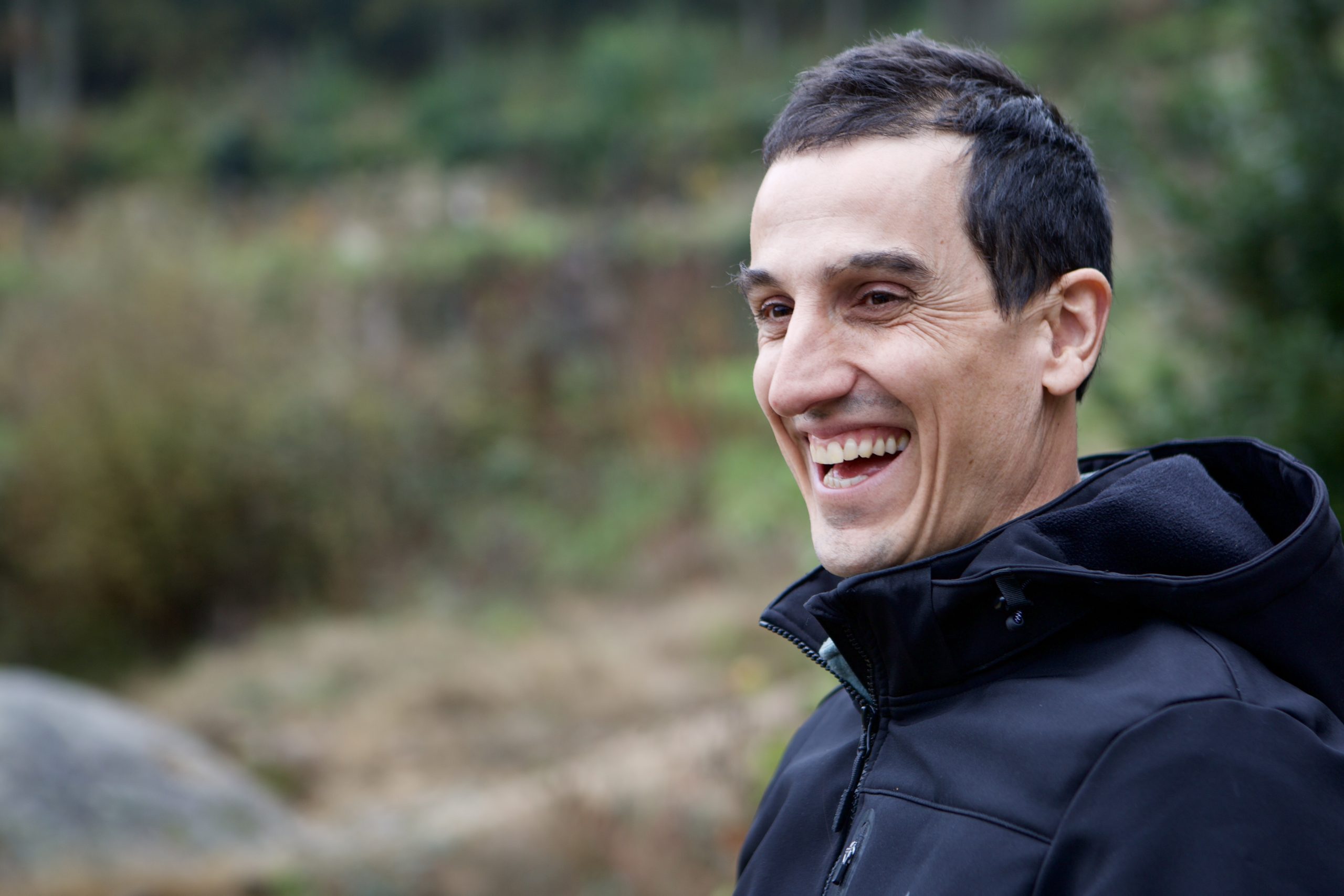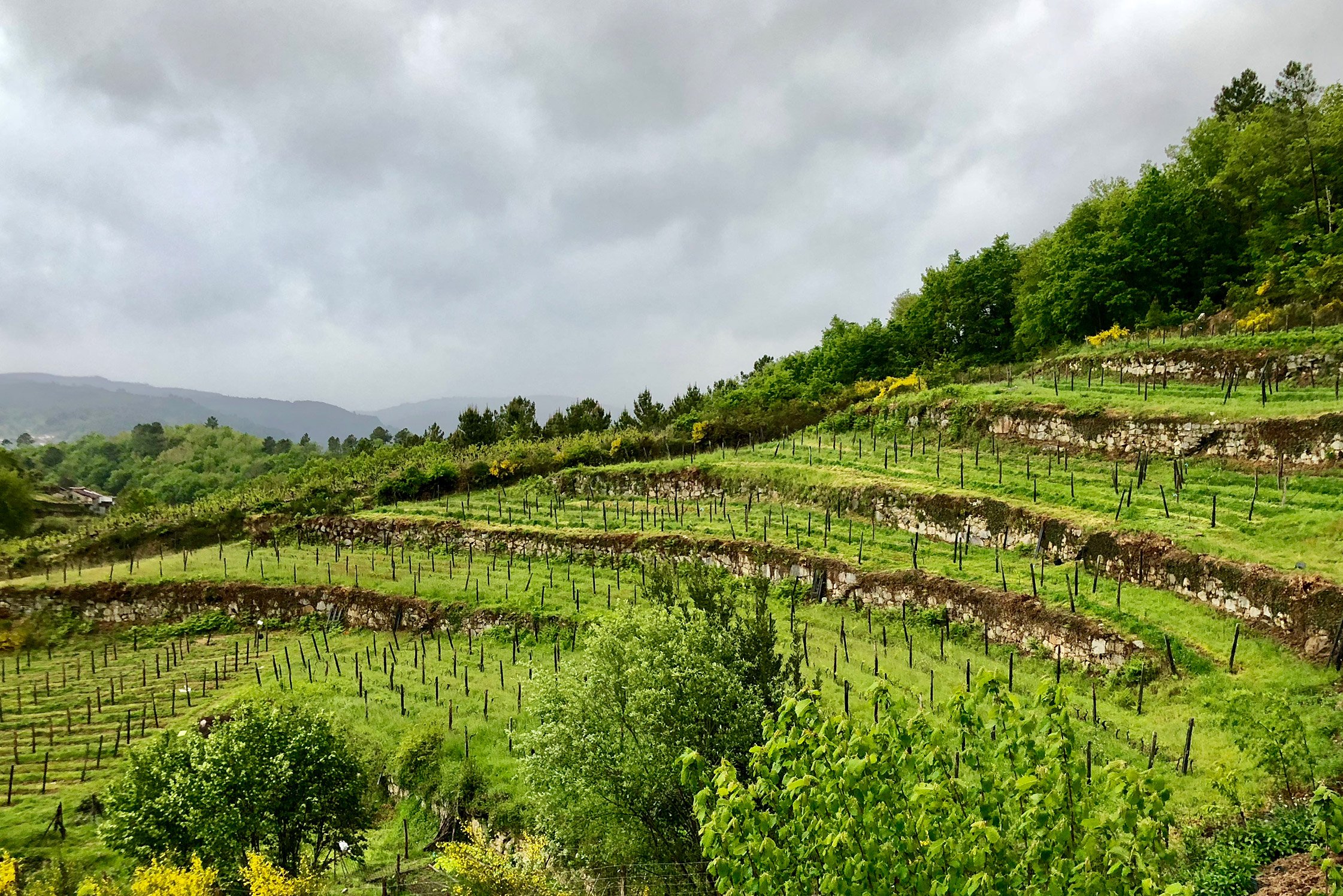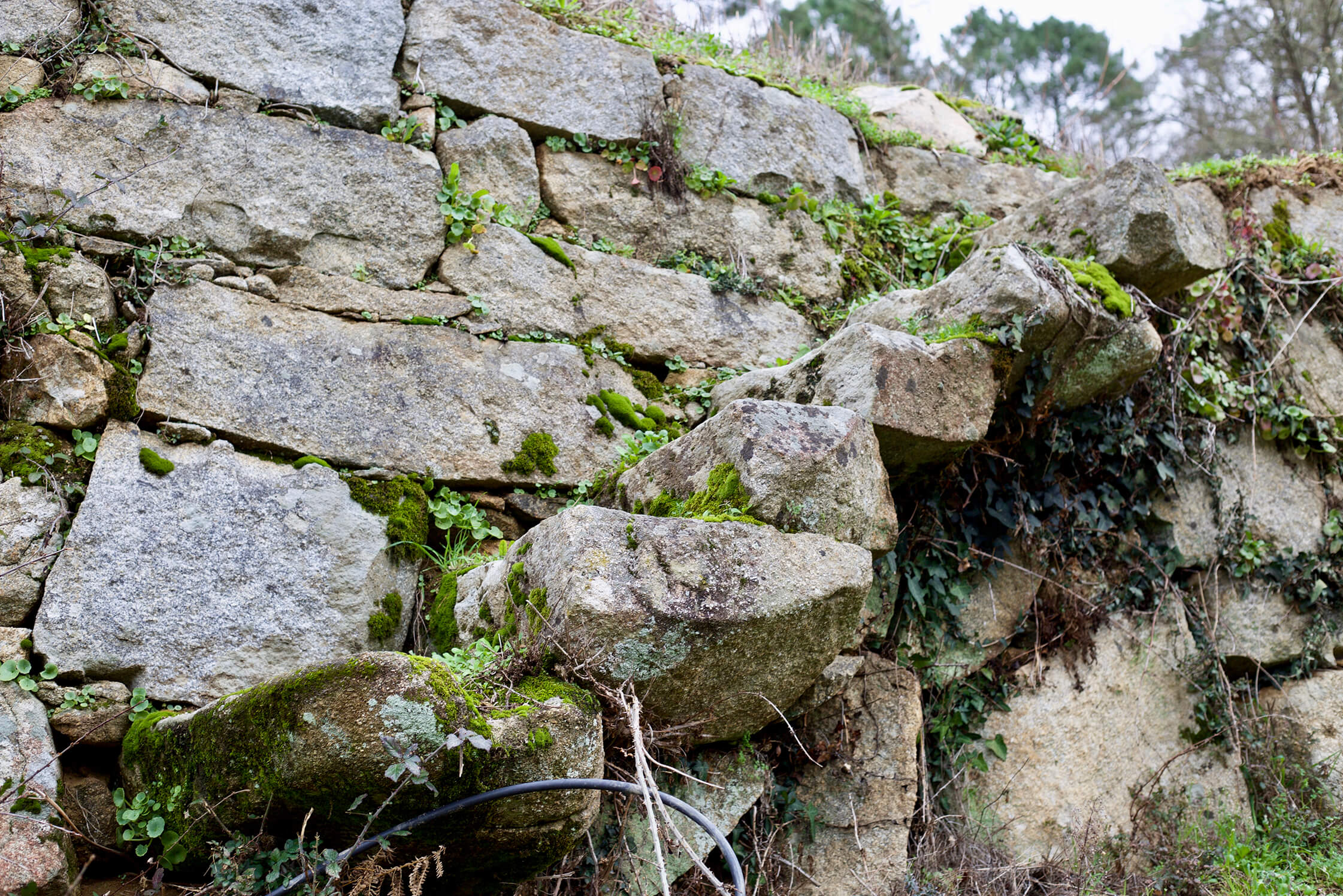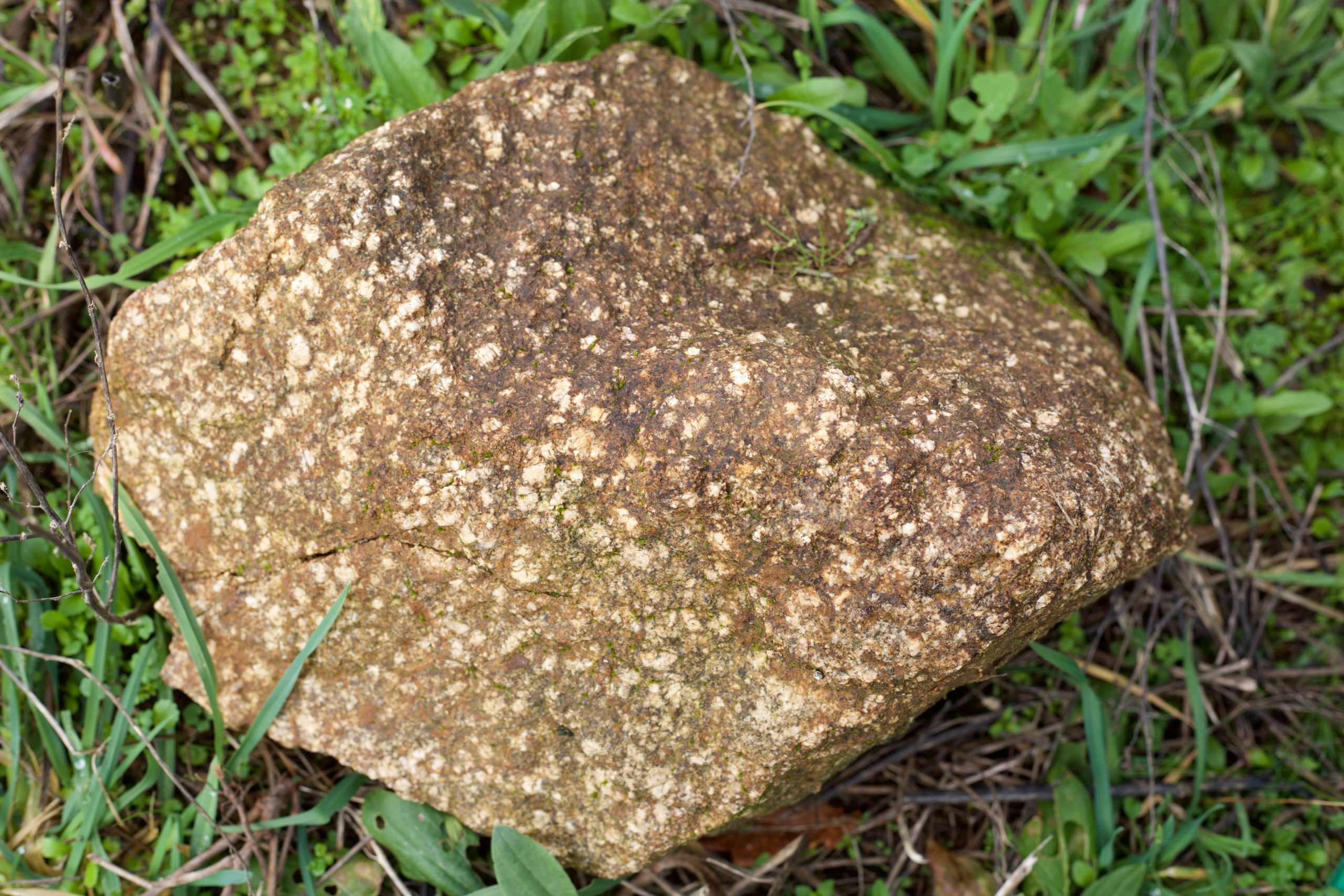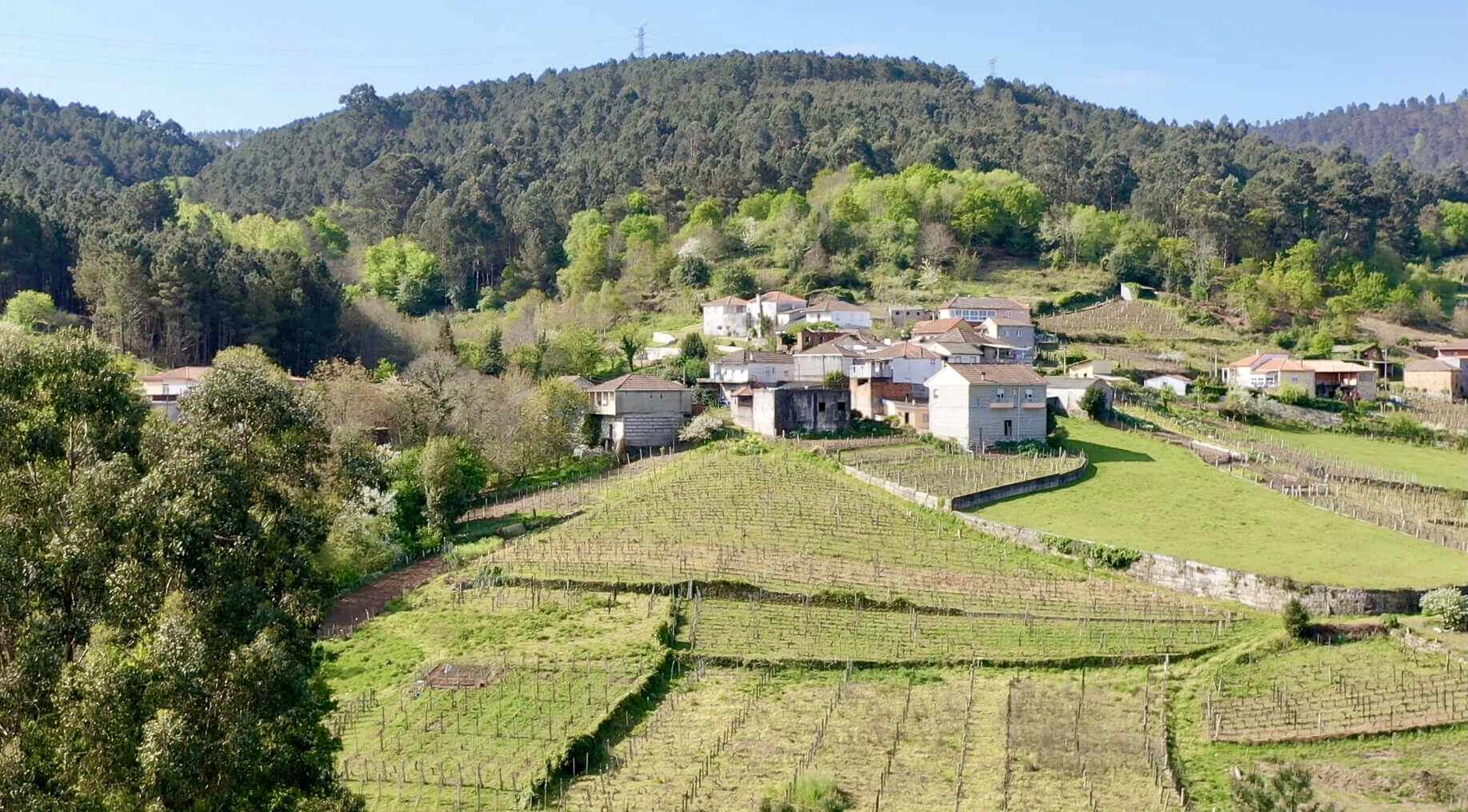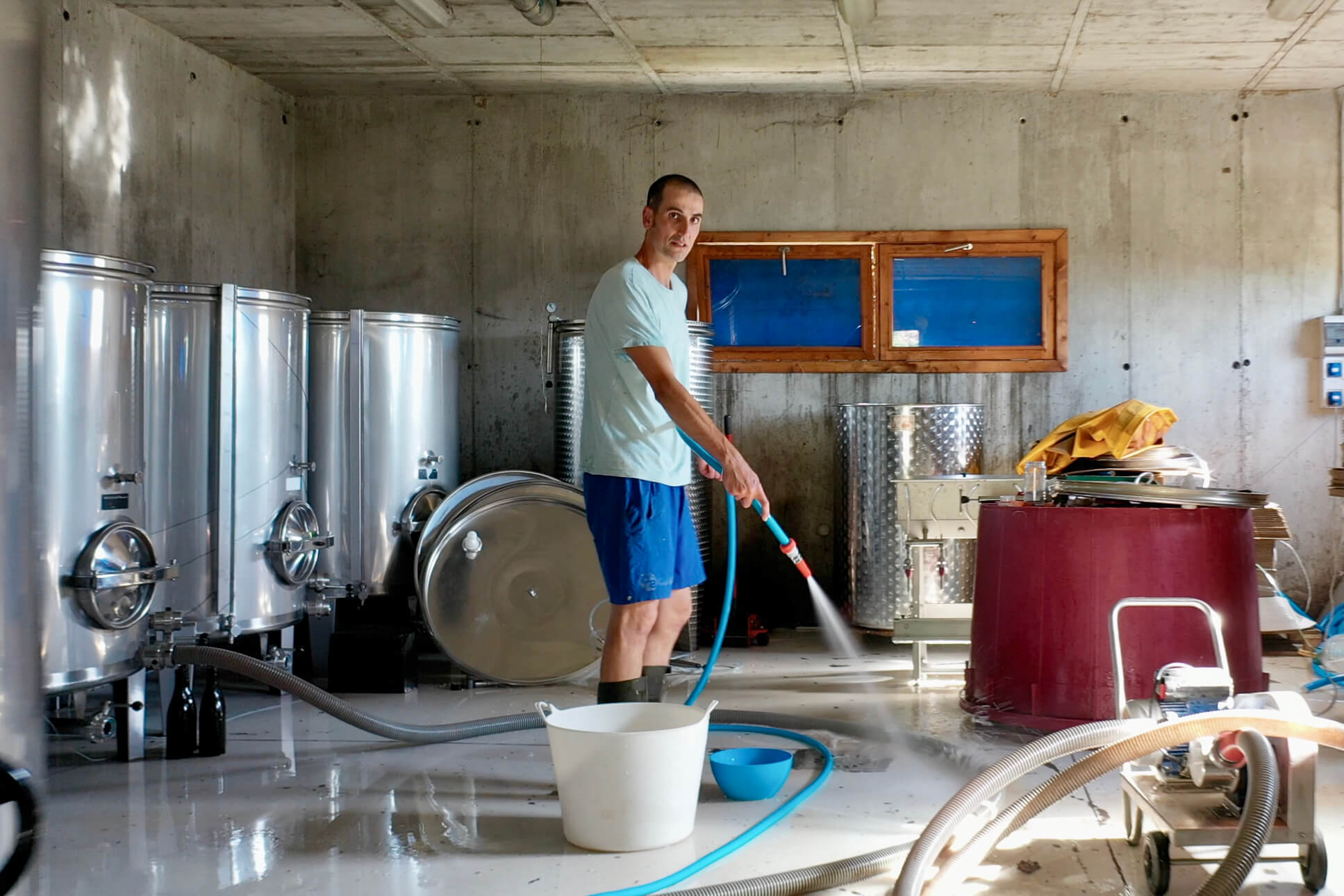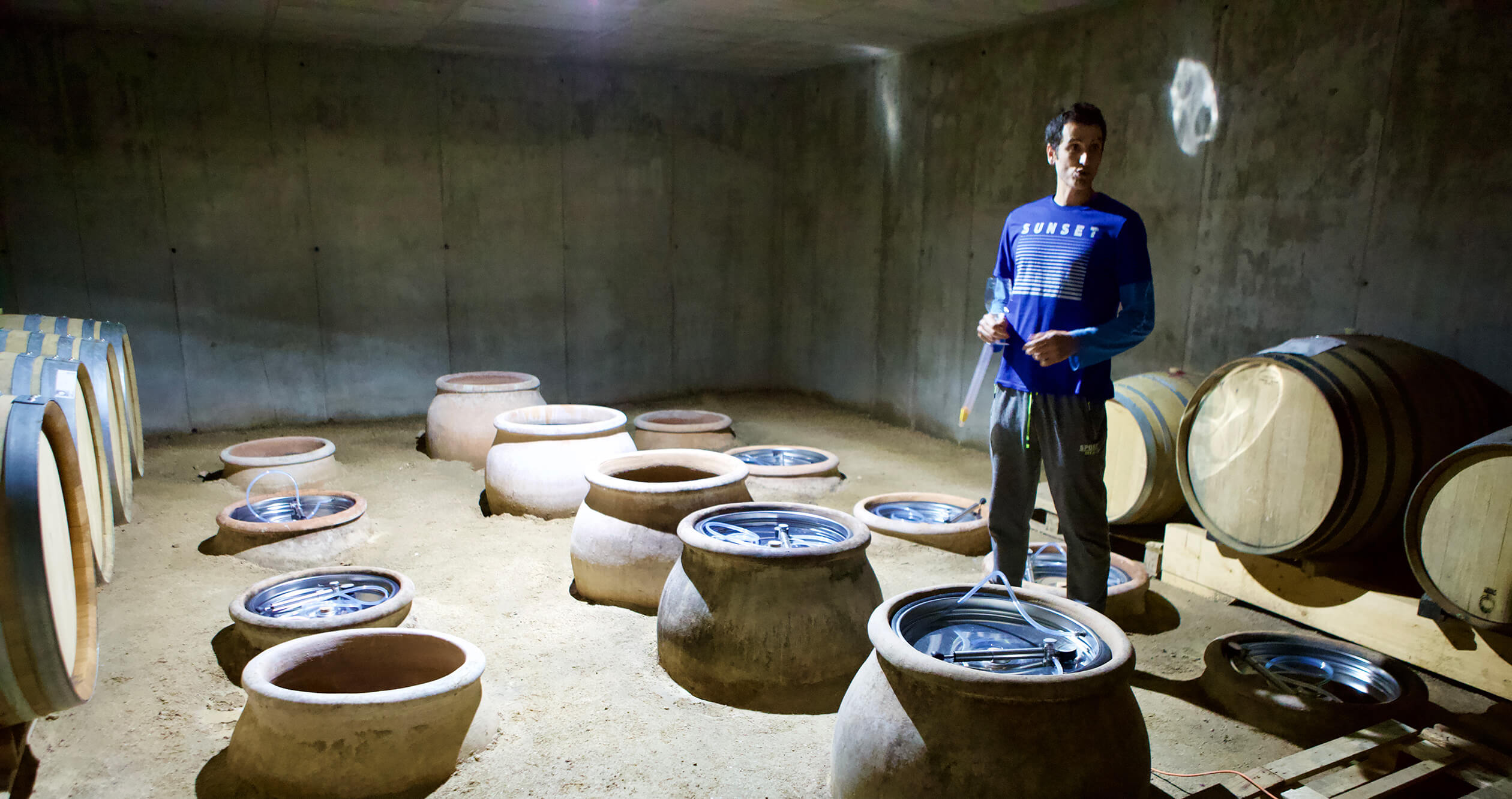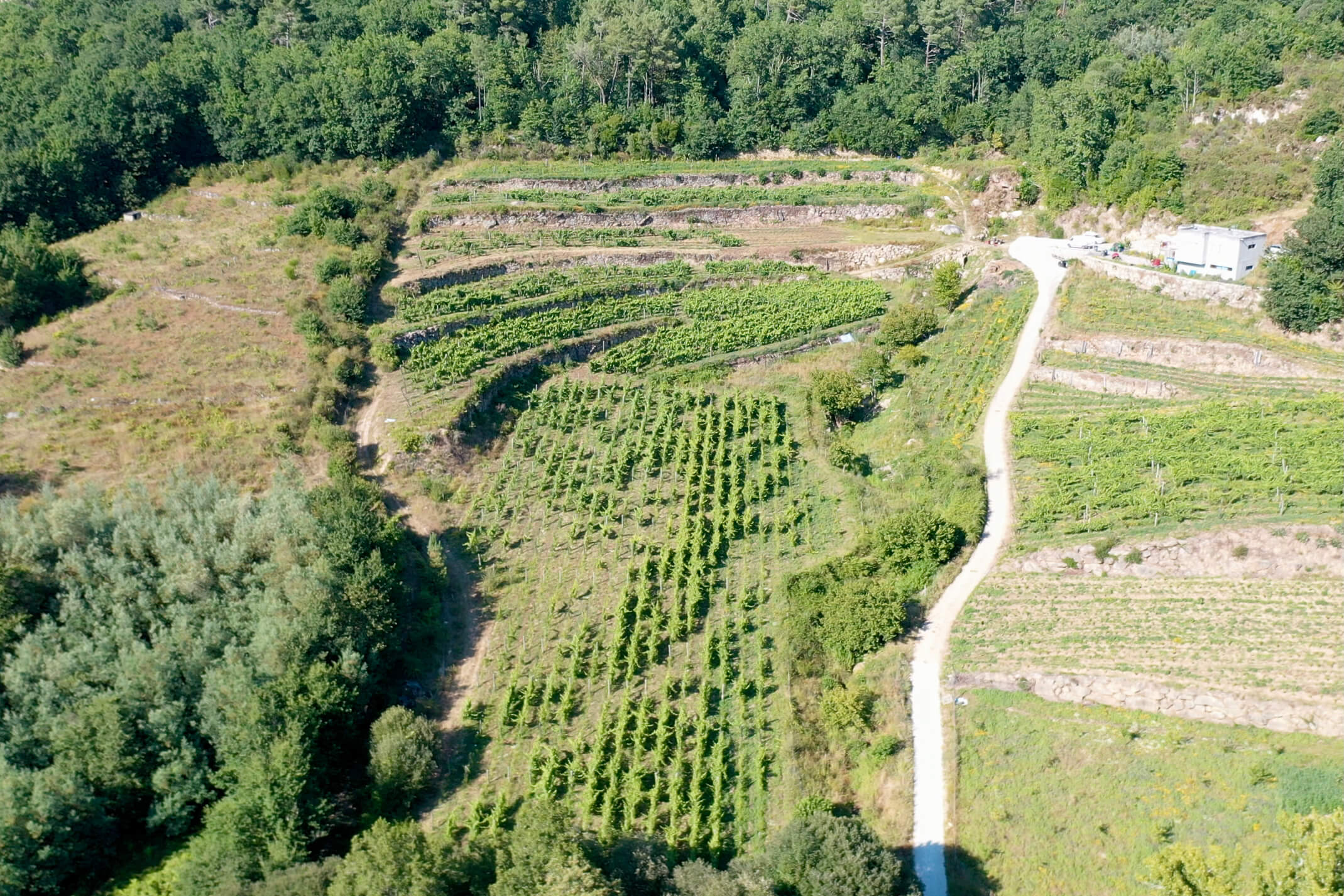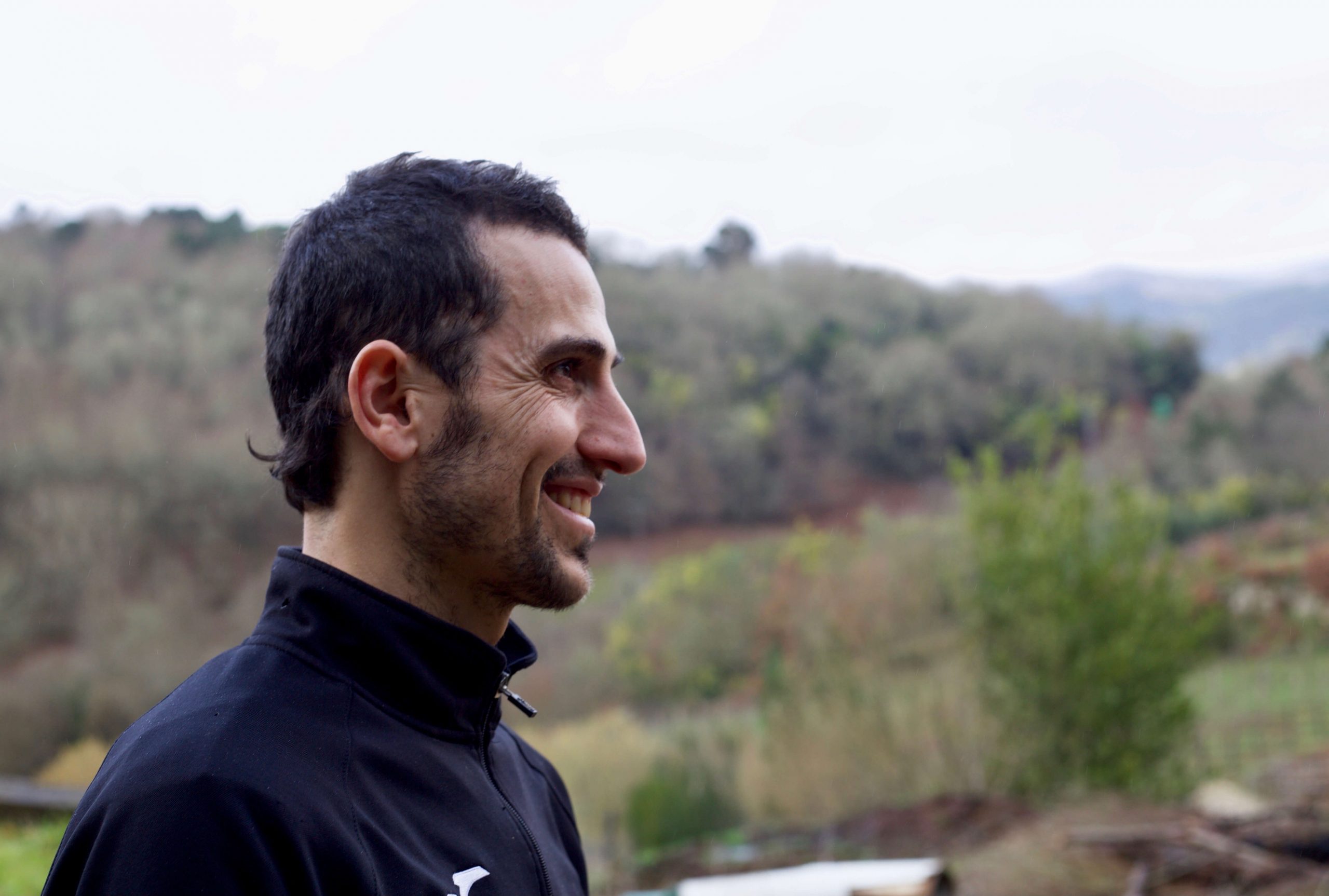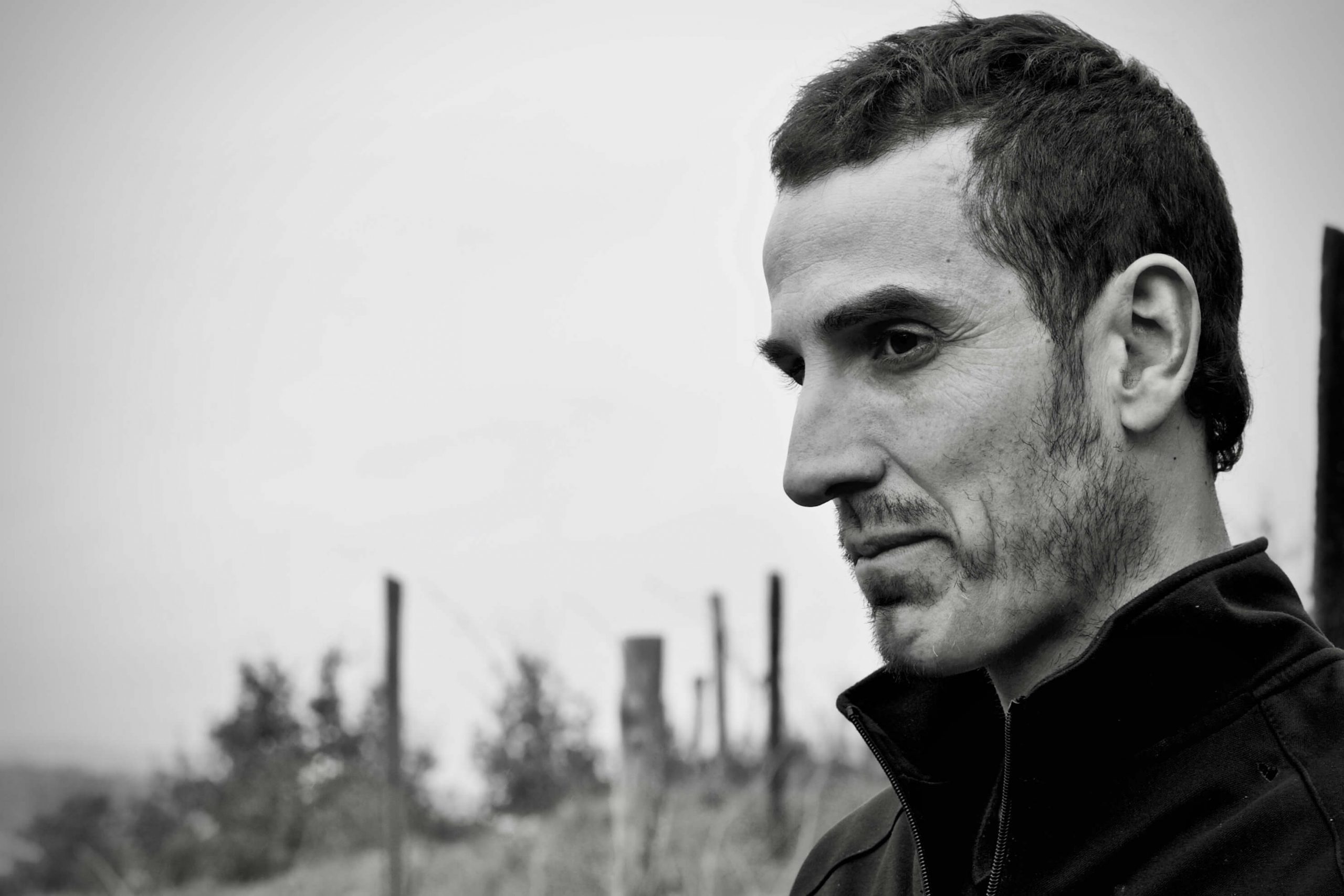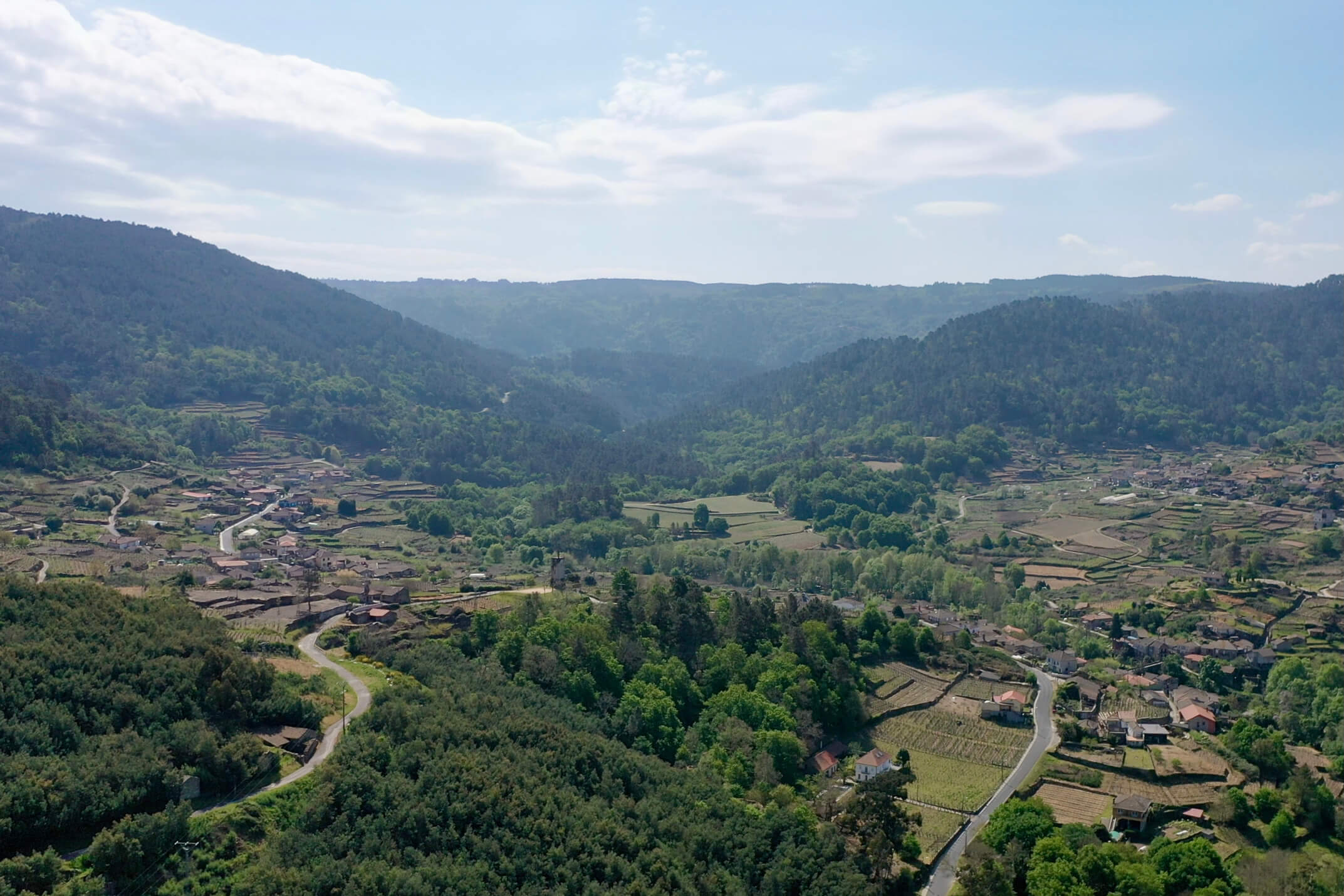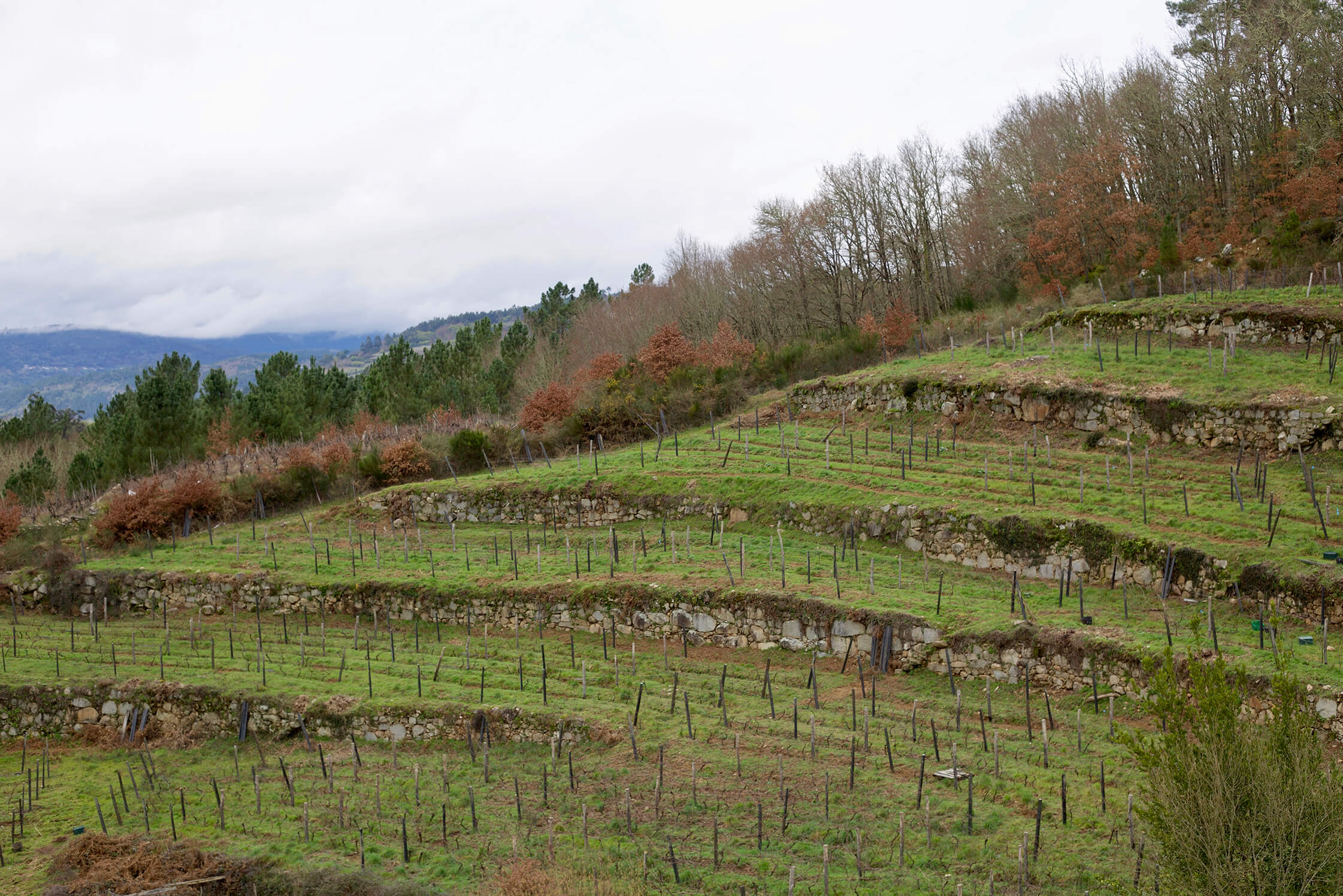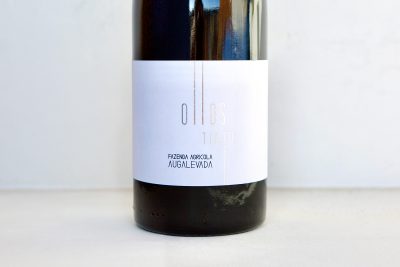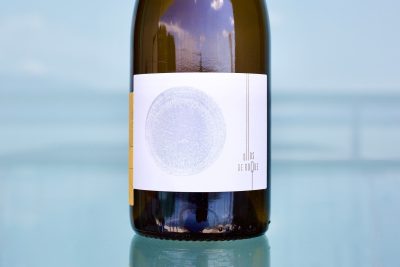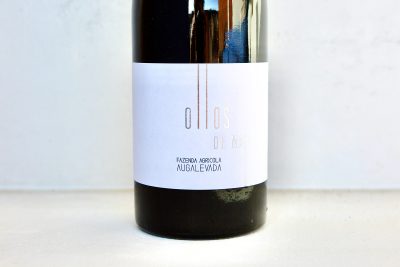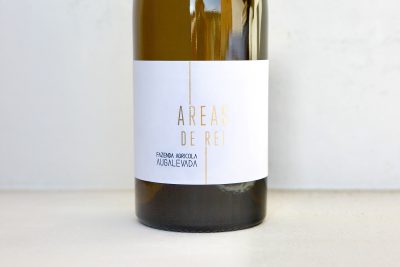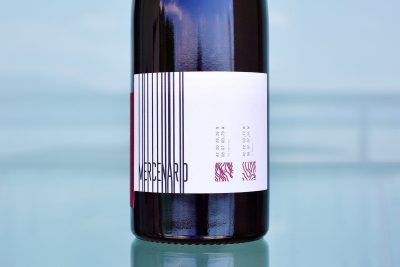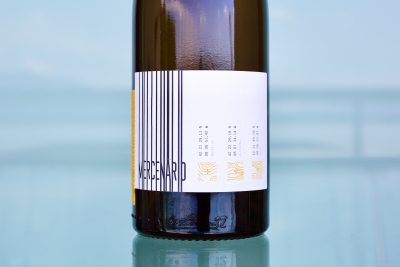Fazenda Augalevada
Short Summary
Full Length Story
Iago Garrido may be destined to become one of Spain’s most influential winegrowers. I first encountered him and some of his wines with our friends from Cume do Avia in 2018, over lunch at O Mosteiro, by the Monasterio de San Clodio, in Galicia’s Ribeiro wine region; Iago and I were being set up, with all eyes on me. As we ate, a few white wines and a single red carried an unexpected throughline of aromas and textures unusual for the region, something Iago calls his “freaky.” I’ve come to think of it as his genius, and so has anyone who’s been fortunate enough to try the wines he bottles under Fazenda Augalevada.
Under the Veil
In 2014, Iago buried his first amphora filled with Treixadura out in the middle of his vineyard, and after a while he became convinced that it was a mistake. But sometimes mistakes can open your mind to new possibilities you may have never otherwise imagined and can even change the course of your life. What Iago thought was an errant shot actually hit a vein of gold.
Ollos de Roque (Eyes of Roque, his firstborn son), had two different versions in 2014 with the second (the supposed mistake) labeled as Número Dous (Number Two, in Galician). He sold Número Dous only to his friends and kept some bottles for himself. The wine that went to market was raised in oak barrels in his cellar and was headed in the direction he thought he was going. But his friends started to tell him how much they liked Número Dous, and Iago found the same unexpected pleasure in the wine as they did. Ultimately, he realized that it was the better of the two approaches.
Flor yeast is fascinating. Those in the wine industry know about this yeast veil that can form on the surface of a wine during its cellar aging, most famously in France’s Jura and Spain’s Jerez. My first contact with some iteration of flor was back in 2000, during my first harvest season at a winery in Santa Maria. During the stirring and topping of some Chardonnay barrels toward the end of their fermentation, I pulled the stainless steel bâtonnage wand and saw that it was covered in a glycerol, yeasty, net-like film. I thought this was a flaw, so I brought it to the attention of the winemaker, who smiled and said it was probably flor yeast and that it might actually contribute to the wine’s complexity.
Wines made under flor in Galicia rarely, if ever, go to market. But Iago said that some local winegrowers told him that in the past, the spring wines would often bloom with flor yeast. Back then, wines were most often drunk from the vat instead of from bottles. As the level of the vat went down and the temperature increased in the spring and summer, the flor protected the wine, and if it didn’t bloom in the vat, the wine wouldn’t last long.
Número Dous provided Iago with a clear path and what was once considered by him as “nothing more than an accident to avoid” became the central focus of his entire range, all of which have varying levels of flor influence.
The Story is in the Eyes
What makes Iago’s wines special is not only that he uses flor yeast, or that he is committed to biodynamic practices in his cellar and the vineyards he owns and the ones he works directly himself, and to only using a minuscule dose of sulfur in his wines. It’s his razor-sharp attention to detail coupled with his openness to take in the ideas and opinions of others. When tasting with him in his cold, pitch-black cellar, with its single dangling construction light that casts massive shadows on the concrete walls lined with different types and sizes of old French oak and ancient Jerez barrels, its dirt floor and his buried amphora farm, he asks our opinion about each wine, and we’re not finished until we taste every vat and every barrel.
Iago can be intimidating if you don’t know him. He’s intense and often drifts into a trance-like focus while tasting, and sometimes—always, actually—when he emerges and asks your opinion, his eyes lock into yours until your thoughts are shared. I always feel I need to be fully on-point in his cellar, and the wines are always fascinating and original, so they don’t lend themselves to quick and easy assessments.
Iago arrived in the wine world after a career in semi-professional and professional futbol. To be a professional futboller in Spain’s La Ligua, one of the world’s most competitive regional leagues, players have to be fully dedicated, or they won’t last long. Iago has clearly brought his rigorous training ethic to his winemaking and he has made stunning strides with his work under the veil. His wines today (written at the time of release of most of his 2019s and his Ollos de Roque 2018) show a distinctive maturity, especially for such a young winegrower without family heritage in the industry.
As someone with a reasonably broad perspective on what is happening in the natural and “wildly natural” boutique wine world, it’s obvious to me that Iago is on the path to become an influential winemaker, worldwide. With his trial-and error-approach, understanding of the value of the nature that surrounds and thrives in his vineyards, the alchemy and obvious pragmatic use of flor as a natural protection for the wines that also provides a wonderfully deep complexing agent, the tension, strictness and inviting aromatic joy of the indigenous Galician grape varieties, and the historic terroirs of the Ribeiro mostly on ancient granite bedrock, Iago is not only discovering his own voice, he’s capturing something altogether unique, curious, precise, and absolutely addicting; not only to drink, but also for taking ample time to contemplate.
Liquid Inspiration
The first tastes of Iago’s white and red wines immediately brings me to France’s Jura and Loire Valley; for others, it’s Jerez. After the flor changed his life, Iago’s first influences were the wines of Jean-François Ganevat, which seems obvious in his first vintages (starting with the 2015 Ollos de Roque); they were perhaps a little heavier than today’s version. Iago is greatly inspired by the style of Pierre Overnoy, and I can see some relation to it in his wines. I’ve had the fortune to enjoy drinking Overnoy quite a few times, and I drank my first bottle of red alone (I forgot the vintage, perhaps 2009) over about a thirty-hour period of observation that was as thrilling as it was incredibly eye-opening. Iago’s reds give me the same feeling of deep exploration and excitement.
When asked who the great influencers are along the camino de Iago, many names emerge, but the most influential for him seems to be José Luis Mateo. Mateo bottles most of his Monterrei appellation wines under the label, Quinta da Muradella. In my contact with many growers and trade professionals in Galicia, I’ve learned that most of them feel that Mateo walks on water, a mythical characterization credited to his startlingly complex, deeply delicious and authentic range of wines. The Galician D.O. Monterrei sits at high altitudes atop a severely eroded ancient mountain terrain on the northern border of eastern Portugal, just across from Portugal’s Tràs-os-Montes D.O.C. subzone, Chaves, where Mateo makes some single-varietal wines from formerly abandoned vineyards on a mix of igneous and metamorphic bedrock. Released long after their harvest year, Mateo’s reds capture the essence of this high altitude, climatically extreme and rocky terrain. Some of them taste as though they have been squeezed from the rocks themselves. While Monterrei hardly relates to the climatic conditions and some of grape varieties of Ribeiro, Mateo’s seeming mastery of his terroirs and his instinct about them in the cellar is what draws people to want to learn from him.
Wine Style
Iago’s craftsmanship with white wines is very precise and each microscopic nuance speaks to his patience and gentle handling. Every wine in the range is vigorous, generously textured, and softly influenced by flor. Imagine varying proportions of Saumur Chenin Blanc from Brézé (seemingly the reference these days for white wines with seriously high voltage) with their vibrating and bright acidic profile, with the deep saltiness and fruit characteristics of an early-picked Anjou Chenin, fresher, lightly flor-influenced Jura Savagnin, and fiery minerally, citrusy Albariño from Salnés. All are on the same frequency, but each with their own amplitude imparted by a unique blend of grapes.
Iago’s reds are trim, fresh and aromatically delicate with high tones and striking analog nuances. The acidity is always on the higher end in the reds due to the natural characteristics of the indigenous Galician grapes he uses (most low-acidity varieties have come from elsewhere in the last two centuries), and their extraction levels are on the lighter side. In 2019, he began to experiment with stems during fermentation with very good results. Like the whites, the reds can be truly profound. As mentioned earlier in Liquid Inspiration, it’s hard to ignore the direct relationship to Jura reds due to the flor. Some fruit characteristics present a fascinating interplay between Gamay grown in Auvergne and higher-altitude Beaujolais spots, along with Poulsards and Trousseaus from the Jura. However, one notable difference between Ribeiro and Jura is that the bedrock and soil types of Jura are largely composed of various levels of calcareous clays and calcareous rock material that tend to make their wines more rounded, while in Ribeiro granite is king—as with Beaujolais—and it tends to impart more delicacy and elegance with a straighter palate profile.
Augalevada’s Vineyards
What deceptively seems like an almost overnight success began with the purchase of Augalevada back in 2008. Tucked up toward the east, behind Ribeiro’s historical vinous cornerstone, the beautifully well-kept Monasterio de San Clodio, Augalevada is the name of the farm. It belonged to Pazo de Rioboó, an important and well-preserved, historic baroque manor close to his property, and has been owned by important Galician clergymen in the last centuries. The vineyard area was completely overgrown with forest and when the terraces were cleared, Iago began to farm biodynamically since the first vine was planted. He continued to play futbol to pay the bills while he built up the property and planted Treixadura vines on its purely granite terraces.
As Iago progressed in the cellar, he realized that his vineyards may be equally suited for other grape varieties than Treixadura. Since then, he has grafted over some vines to the white varieties, Lado and Agudelo (Chenin Blanc), and reds, Brancellao, Caíño Longo and Caíño da Terra—all grapes, both red and white, with higher natural acidity levels than Treixadura.
The Mercenario Range
Mercenario, or “mercenary,” in English, is a range of wines that comes from purchased fruit, or vineyards that Iago farms but doesn’t own. Vineyards worked by Iago are under organic or biodynamic culture, and others are a mix of organic and conventional, depending on each grower. The only grapes that Iago accepts from conventional growers are from exceptional sites, but they remain a minuscule proportion of his fruit. And of course he is constantly trying to convert the growers he works with to organic farming.
In Ribeiro, and other parts of Galicia less influenced by the drier weather in the east and south, organic and biodynamic farming are extremely difficult. Constant rain and humidity encourage an almost uncontrollable growth of mildew, which necessitates a greater frequency of copper and sulfur treatments than in other drier wine regions. Most of the vineyards Iago works are done by hand because they’re inaccessible by machine. This inaccessibility is also a major financial incentive for growers to use chemicals because the manual labor is too costly if the wines cannot be sold for a price to offset the extra expense. Of course, this is not unique to Ribeiro; it occurs in many famous places across the wine world where driving a tractor through the vineyards to plow may lead to serious accidents, and so much erosion that it becomes impossible to keep the vines rooted in the ground. Take Côte-Rôtie for example: There are only half a dozen organic winegrowers in the entire appellation, even though the mildew pressure is virtually non-existent by comparison, and the average cost of the wines is still far greater than in the Ribeiro.
The Grapes
Iago has a few single-varietal wines, but most of what he makes are blends. The indigenous grapes of Galicia are often best suited to support each other than work alone, which isn’t so different from the Galician wine culture itself which I find less individualistic and more of a community that lends a helping hand or helpful input when it’s needed. This banding together may be partly due to the regular barrage of mildew each year but otherwise unpredictable local weather around bud break and flowering, the latter of which establishes the year’s maximum potential harvest prior to any other challenges that may arrive later. Even close to harvest periods the weather can quickly take a turn, potentially closing the door on full phenolic ripeness for the later-ripening varieties, or destroying the crop with an unexpected hail just days before picking, as it did in some parts of Ribeira Sacra in 2018. Galician grapes often play better as a band than separately because each variety is so unique and specific. Some have monstrous acidity and gentle tannins, while others are monsters all the way around, and some are lower acidity grapes with more neutral characters that can be used to temper overly-energetic varieties that didn’t quite hit the mark in full phenolic ripeness.
Another major contributing factor for the necessity of blending grapes can be the diversity of bedrock and topsoil within each single vineyard. There are some areas that have extremely large changes from meter to meter, and differing exposures and slope angles vary constantly inside the same vineyard. The general topography of the more mountainous regions of Galicia are chaotic due to the massive amount of erosion from rainfall, which led to the creation of many waterways; in Ribeiro, for example, one of the smallest appellations, there are eleven streams and rivers. This alone dictates a greater need for grape diversity to elevate one’s chances to make an actual living growing grapes and making wine.
White Grapes
Albariño may be the greatest exception to the rule of single varietal wines in Galicia because of its ability to develop deep characteristics that easily compete on the white wine world’s biggest stage; plus, there are a lot of great examples from many different winegrowers. Most often it leads with big mineral nuances and citrus notes while wonderfully transmitting the climate and rock and soil types in which it’s grown. I don’t yet understand or have experience with the limits of Albariño’s as a vin de garde, whether it can hold up for decades and continue to improve along the way more than just sustain its youth. I’ve had many excellent examples with more than ten years of cellar age, but very few beyond that that I can remember. With the recent resurgence of Galician wines on the world’s stage, it seems that people are finally taking Albariño seriously. In Iago’s case, he plays with Albariño from the Rías Baixas subzone, Salnés, along with some that he cultivates in his home region, Ribeiro.
Treixadura may be one of the most underrated grapes in the world of white wine. It has massive potential due to its broad complexity, but its greatest inhibitor (aside from the challenge in pronouncing its name correctly: Tray-shah-dura) is its fast shift from good acidity to going totally flat after just a few hot days before harvest, which makes the optimal moment to pick it hard to pin down, so most of the time it’s blended with grapes that can bring a greater degree of acidity to the wine. It offers a great range of complexities and embodies the spirit of Ribeiro with its fresh green and dried grass characteristics, white-fleshed fruit and nice roundness in the palate, with good textures that seem to be influenced by the type of rock on which it’s grown. In the case of Augalevada, Iago picks the Treixadura earlier than probably anyone in the appellation to preserve freshness, while capturing some of the more compelling attributes missed out with later picked fruit, like fresh herbs and citrus along with a great deal of intense mineral and palate textures. The flor yeast works amazingly well with Treixadura by keeping its tension intact.
After tasting examples of Lado for the first time in the cellars of Augalevada and Cume do Avia, I immediately became a fan. It produces extremely racy white wine with massive acidity and strikingly balanced phenolic maturity—what’s not to love about that? Interestingly, it used to be widely planted in the region, but the volume of vines was severely reduced over the last centuries. Today, with a greater acceptance in the fine wine market for grape varieties with extremely high voltage, it’s making a comeback.
Agudelo is a regional biotype of Chenin Blanc, and Iago is in love with this variety. Who can blame him? Chenin seems like a natural fit for this area of Galicia and isn’t so distant in its overall characteristics from some of the best local white grapes. It brings big acidity, texture and mineral characteristics to the blend in his Ollos de Roque wine. Geologically, the Ribeiro is directly related to France’s Anjou wine region and it shows in this variety and the wines it’s blended with.
Palomino and Torrontés are used in very small quantities in the Mercenario white wine and come from the organically farmed vineyard of Manolo de Traveso. Palomino has a relatively neutral character and was brought into Galicia after phylloxera and the mildew invasions of the twentieth century to increase the yield from each vineyard. Torrontés is the second most planted grape variety in Ribeiro after Treixadura. It has relatively good acidity and aroma and produces wines with a lighter body.
Red Grapes
We start with the whole of the Caíño family, of which there are numerous biotypes, all with the prefix, Caíño. However, there are some Caíños, like Caíño da Terra, that are not genetically related to the Caíño family even though they share the name; Caíño da Terra comes from the heritage of Merenzao, better known worldwide as Trousseau. Caíño Redondo is also not genetically related to the Caíño family, though this might change after some more genetic exploration. In any case, Caíño reds are always intense. Sometimes they can be snuggly acidic when bottled alone, and even more aggressive in cooler areas, like Ribeiro and Rías Baixas. They do well when added to a wine that is missing strength in its acidic spine, or a strong aromatic presence. That said, I believe this grape has serious untapped potential, and in the face of climate change—coupled with a better understanding of how to grow it—it will surely rise up in the ranks and find more balance when the growers crack its code. It has everything a truly great family of grapes possesses: naturally good if not obscene acidity in some cases, a fullness in the palate, good core concentration, quality phenolic maturity at lower alcohol levels, and a rare talent for not only channeling its terroir, but giving it thrust. Iago says that Caíño da Terra can uniquely evoke tastes of mint and orange in the palate. (In these parts, citrus and refreshing green notes are a common asset.) Given the greater availability of Caíño Longo, the variations of ripeness really influence the expression of this grape. It can exhibit bright, tense red fruits with citrus notes when picked earlier, and when picked on the riper side, darker fruit with notable rusticity.
Brancellao is one of the most exciting prospects in Galicia with a more inviting and gentler acidity than the Caíño clan. It is perfumed and subtle while maintaining a mouth-filling freshness and tension on a delicate frame; it’s also known in some parts as Albarello. It is a vigorous vine that needs to be managed well and produces the most elegant and perhaps consistent wines each year between the high-quality reds in Galicia.
Sousón is a vigorous beast that needs taming. As I’ve mentioned in pretty much all the pieces I’ve written since I started writing about Northwest Iberia, I think the world of this black grape and its potential; it only needs to be better understood and micromanaged, otherwise it can turn werewolf pretty quickly. It has all the fixings for greatness: big tannin, big acid, big color, and low alcohol potential—think a leaner Syrah but with its structural elements on steroids. Here it’s grown on very similar bedrock and soil types as France’s Northern Rhône Valley, and similarly to Rhône Valley Syrah, it was quietly shipped off to Bordeaux from both Spain and Northern Portugal where it supported the structure Bordeaux wines needed during the numerous vinous crises in the 1800s, when there was a severe shortage of their own local grapes. It’s a dandy of a beast, but often needs a muzzle or a very in-tune winegrower to tame its rustic tendencies. Once the Galician vinous reconquistadores have a full generation of experience refining it, I expect big things from this grape variety. One of its main problems lies in getting the local growers to believe in its greater relevance to the world of wine. To me, it seems completely obvious.
Espadeiro is another very promising grape that leads with aromas closer to the red and slightly orange fruit and dried flower side (when not picked on the later side), but perhaps more in line with fruit notes common in Piemontese red grapes, like Nebbiolo or Vespolina from Alto Piemonte, rather than the sweeter red fruits notes more often found in a Burgundian Pinot Noir, or even in Jura reds. Espadeiro’s clusters are compact but big, and the vine is very vigorous. Espadeiro is often aromatically reserved in a positive way compared to the other red grapes in Augalevada’s stable.
White Wine Cellar Notes
All of Iago’s white and red wines are in contact with flor yeast.
First in the range is the Mercenario Blanco, a mix of Treixadura, Albariño, Torrontés, and Palomino. The primary fermentation starts in stainless steel with low temperatures, and after fermentation they are transferred to an equal mixture of 400-liter amphoras and 600-liter stainless steel tanks for around ten months of aging. The majority of the grapes come from the Manolo de Traveso vineyard, which is rich in clay (of the non-water swelling type, unlike those of the Côte d’Or, for example) with granite bedrock on some of the highest vineyards in the Miño River Valley. Some of the Treixadura comes from the Arnoia Valley on a decomposed granite vineyard and the Albariño from the lower Miño area in Filgueira. There are other small parcels scattered through the three main valleys, Arnoia, Avia and Miño.
Crianza Biologica (in 2019) is composed of equal parts of Albariño from the Val do Salnés, in Rías Baixas, and Treixadura from Manolo de Traveso, in Ribeiro’s Miño Valley, on high altitude, clay-rich topsoil and granite bedrock. It’s fermented and aged exclusively in 400-liter amphoras and ages for ten months before bottling. The 2020 vintage is partially aged in ancient Jerez barrels.
The Mercenario Albariño is sourced from Salnés, the subzone that houses the greatest collection of high-quality Albariños within Rías Baixas. The grapes are pressed directly after harvest and they begin the fermentation at low temperatures in stainless steel. The aging takes place with one-third in 400-liter amphoras and two-thirds in old oak barrels for ten months. The vineyard source for the Albariño is in a town called Xil and is grown entirely on granite bedrock and granite topsoil mixed with clay. The vines are very old, and the biotype produces very small clusters and small berries.
Ollos de Roque is the flagship of the fazenda. The vines are very young and many of them are grafted onto already quite young rootstocks. All the grapes come from the organic and biodynamically farmed Augalevada vineyard composed completely of granite. It is a mix of Treixadura, Lado and Agudelo. They are pressed directly and spend their fermentations partially in stainless steel at very low temperatures with another part in old oak barrels. The wine is aged in one-third amphora and two-thirds in old, 600-liter and 840-liter oak barrels for ten months. Starting in 2020, ancient 500-liter Jerez barrels (likely over 100 years old) have made it into the cellar and the results are beautiful. The comparison between French oak barrels and Jerez barrels is interesting: My initial observation was that the wines in the Jerez barrels were more cohesive and analog in frequency, while those in the younger (but still completely neutral) oak barrels were a little more edgy. It will be interesting to follow the wines in these old barrels.
Red Wine Cellar Notes
The Mercenario Tinto is composed of 40% Caíño Longo, 20% Brancellao, 20% Espadeiro, 15% Sousón, and 5% Caíno da Terra, all from many parcels throughout Ribeira in the Arnoia, Avia and Miño Valleys on many different soil types, but predominantly on granite. In 2019, the wine was made with 100% stem inclusion during its thirty-five days of fermentation and was very gently macerated with very light and infrequent extractions. After pressing, the wine went into two-thirds 500-liter and 600-liter old barrels, and one-third amphora where it was aged for ten months.
The Mercenario Tinto Añada Selección is a miniscule-production wine aged in one 600-liter old French oak barrel for ten months. The grapes come entirely from the Augalevada vineyard and the wine is composed of 60% Caíño Longo, 30% Brancellao, and 10% Caíño da Terra. The fermentation is made for more than a thirty-day period (depending on the year) and in 2019 was made with 60% whole bunches. The bedrock and topsoil here is completely composed of granite. -TV


